Abbes, Z., Kharrat, M., Delavault, P., Chaïbi, W. and Simier, P. 2009. Nitrogen and carbon relationships between the parasitic weed
Orobanche foetida and susceptible and tolerant faba bean lines.
Plant Physiol. Biochem. 47:153-159.


Abbes, Z., Kharrat, M., Delavault, P., Simier, P. and Chaïbi, W. 2007. Field evaluation of the resistance of some faba bean (
Vicia faba L.) genotypes to the parasitic weed
Orobanche foetida Poiret.
Crop Prot. 26:1777-1784.

Abbes, Z., Mkadmi, M., Trabelsi, I., Amri, M. and Kharrat, M. 2014. Orobanche foetida control in faba bean by foliar application of benzothiadiazole (BTH) and salicylic acid. Bulg. J. Agric. Sci. 20:1439-1443.
El-Aty, M. S. M., El-Galaly, O. A. M. and Soliman, A. A. M. 2016. Heterosis and combining ability for yield, yield components and inheritance of tolerance to
Orobanche in Faba bean.
Egypt. J. Plant Breed. 20:397-412.

Achuo, E. A., Audenaert, K., Meziane, H. and Höfte, M. 2004. The salicylic acid-dependent defence pathway is effective against different pathogens in tomato and tobacco.
Plant Pathol. 53:65-72.

Al-Wakeel, S. A. M., Moubasher, H., Gabr, M. M. A. and Madany, M. M. Y. 2012. Induction of systemic resistance in tomato plants against Orobanche ramosa L. using hormonal inducers. Egypt. J. Bot. 52:403-416.
Al-Wakeel, S. A. M., Moubasher, H., Gabr, M. M. and Madany, M. M. Y. 2013. Induced systemic resistance: an innovative control method to manage branched broomrape (Orobanche ramosa L.) in tomato. IUFS J. Biol. 72:9-21.
Amri, M., Abbes, Z., Trabelsi, I. and Kharrat, M. 2019. Release of a new faba bean variety "Chourouk" resistant to the parasitic plants Orobanche foetida and O. crenata in Tunisia. . Int. J. Agric. Biol. 23:499-505.
Banerjee, A., Das, A. B. and Mittra, B. 2016. Aluminium pretreatment induces activation of defense responses against
Fusarium infection in
Triticum aestivum.
Russ. J. Plant Physiol. 63:483-489.

Bar-Nun, N., Sachs, T. and Mayer, A. M. 2007. A role for IAA in the infection of
Arabidopsis thaliana by
Orobanche aegyptiaca.
Ann. Bot. 101:261-265.



Benhamou, N., Gagn, S., Quér, D. and Dehbi, L. 2000. Bacterial-mediated induced resistance in cucumber: beneficial effect of the endophytic bacterium
Serratia plymuthica on the protection against infection by
Pythium ultimum.
Phytopathology. 90:45-56.


Bigirimana, J. and Höfte, M. 2002. Induction of systemic resistance to
Colletotrichum lindemuthianum in bean by a benzothiadiazole derivative and rhizobacteria.
Phytoparasitica. 30:159-168.

Briache, F. Z., Ennami, M., Mbasani-Mansi, J., Gaboun, F., Abdelwahd, R., Fatemi, Z. E. A., El-Rodeny, W., Amri, M., Triqui, Z. E. A. and Mentag, R. 2019. Field and controlled conditions screenings of some faba bean (
Vicia faba L.) genotypes for resistance to the parasitic plant
Orobanche crenata Forsk. and investigation of involved resistance mechanisms.
J. Plant Dis. Prot. 126:211-224.

Burdziej, A., Da Costa, G., Gougeon, L., Mao, I., Bellée, A., Corio-Costet, M.-F., Mérillon, J.-M., Richard, T., Szakiel, A. and Cluzet, S. 2019. Impact of different elicitors on grapevine leaf metabolism monitored by 1H NMR spectroscopy.
Metabolomics. 15:67


Buschmann, H., Fan, Z.-W. and Sauerborn, J. 2005. Effect of resistance-inducing agents on sunflower (Helianthus annuus L.) and its infestation with the parasitic weed Orobanche cumana Wallr. . J. Plant Dis. Prot. 112:386-397.
Chrzanowski, G., Ciepiela, A. P., Sprawka, I., Sempruch, C., Sytykiewicz, H. and Czerniewicz, P. 2003. Activity of polyphenoloxidase in the ears of spring wheat and triticale infested by grain aphid (Sitobion avenae [F.]). Electron. J. Pol. Agric. Univ. 6:1-5.
Clarke, J. D., Volko, S. M., Ledford, H., Ausubel, F. M. and Dong, X. 2000. Roles of salicylic acid, jasmonic acid, and ethylene in
cpr-induced resistance in
Arabidopsis.
Plant Cell. 12:2175-2190.



Durrant, W. E. and Dong, X. 2004. Systemic acquired resistance.
Annu. Rev. Phytopathol. 42:185-209.


Echevarría-Zomeño, S., Pérez-de-Luque, A., Jorrín, J. and Maldonado, A. M. 2006. Pre-haustorial resistance to broomrape (
Orobanche cumana) in sunflower (
Helianthus annuus): cytochemical studies.
J. Exp. Bot. 57:4189-4200.


Ennami, M., Briache, F. Z., Mansi, J. M., Gaboun, F., Ghaouti, L., Belqadi, L. and Mentag, R. 2017. Genetic diversity of Moroccan
Orobanche crenata populations revealed by sequencerelated amplified polymorphism markers.
J. Agric. Sci. 9:164-175.

Ennami, M., Mbasani-mansi, J., Briache, F. Z., Oussible, N., Gaboun, F., Ghaouti, L., Belqadi, L., Ghanem, M. E., Aberkani, K., Westwood, J. and Mentag, R. 2020 Growth-defense tradeoffs and source-sink relationship during both faba bean and lentil interactions with
Orobanche crenata Forsk.
. Crop Prot. 127:104924.Fadeel, A.

Fernández-Aparicio, M., Reboud, X. and Gibot-Leclerc, S. 2016. Broomrape weeds. Underground mechanisms of parasitism and associated strategies for their control: a review.
Front. Plant Sci. 7:135



ndez-Aparicio, M., Kisugi, T., Xie, X., Rubiales, D. and Yoneyama, K. 2014. Low strigolactone root exudation: a novel mechanism of broomrape (
Orobanche and
Phelipanche spp.) resistance available for faba bean breeding.
J. Agric. Food Chem. 62:7063-7071.


Fernández-Aparicio, M., Sillero, J. C., Pérez-de-Luque, A. and Rubiales, D. 2008. Identification of sources of resistance to crenate broomrape (
Orobanche crenata) in Spanish lentil (
Lens culinaris) germplasm.
Weed Res. 48:85-94.

Goldwasser, Y., Plakhine, D., Kleifeld, Y., Zamski, E. and Rubin, B. 2000. The differential susceptibility of vetch (
Vicia spp.) to
Orobanche aegyptiaca: anatomical studies.
Ann. Bot. 85:257-262.

Gonsior, G., Buschmann, H., Szinicz, G., Spring, O. and Sauerborn, J. 2004. Induced resistance: an innovative approach to manage branched broomrape (
Orobanche ramosa) in hemp and tobacco.
Weed Sci. 52:1050-1053.

Gravel, V., Antoun, H. and Tweddell, R. J. 2007. Effect of indoleacetic acid (IAA) on the development of symptoms caused by
Pythium ultimum on tomato plants.
Eur. J. Plant Pathol. 119:457-462.

Habimana, S., Nduwumuremyi, A. and Chinama, R. J. D. 2014. Management of
orobanche in field crops: a review.
J. Soil Sci. Plant Nutr. 14:43-62.

Katoch, R., Mann, A. P. S. and Sohal, B. S. 2005. Enhanced enzyme activities and induction of acquired resistance in pea with elicitors.
J. Veg. Sci. 11:67-83.

Kösesakal, T. and Ünal, M. 2009. Role of zinc deficiency in photosynthetic pigments and peroxidase activity of tomato seedlings. IUFS J. Biol. 68:113-120.
Kusumoto, D., Goldwasser, Y., Xie, X., Yoneyama, K., Takeuchi, Y. and Yoneyama, K. 2007. Resistance of red clover (
Trifolium pratense) to the root parasitic plant
Orobanche minor is activated by salicylate but not by jasmonate.
Ann. Bot. 100:537-544.



Labrousse, P., Arnaud, M. C., Griveau, Y., Fer, A. and Thalouarn, P. 2004. Analysis of resistance criteria of sunflower recombined inbred lines against
Orobanche cumana Wallr.
Crop Prot. 23:407-413.

Lopez, A. M. Q. and Lucas, J. A. 2002. Effects of plant defence activators on anthracnose disease of cashew. Eur. J. Plant Pathol. 108:409-420.
Mandal, S. and Mitra, A. 2007. Reinforcement of cell wall in roots of
Lycopersicon esculentum through induction of phenolic compounds and lignin by elicitors.
Physiol. Mol. Plant Pathol. 71:201-209.

Monci, F., García-Andrés, S., Sánchez-Campos, S., Fernández-Muñoz, R., Díaz-Pendón, J. A. and Moriones, E. 2019. Use of systemic acquired resistance and whitefly optical barriers to reduce tomato yellow leaf curl disease damage to tomato crops.
Plant Dis. 103:1181-1188.


Nascimento, K. J. T., Debona, D., França, S. K. S., Gonçalves, M. G. M., DaMatta, F. M. and Rodrigues, F. 2014. Soybean resistance to
Cercospora sojina infection is reduced by silicon.
Phytopathology. 104:1183-1191.


Ojha, S. and Chatterjee, N. C. 2012. Induction of resistance in tomato plants against Fusarium oxysporum f. sp. lycopersici mediated through salicylic acid and. Trichoderma harzianum. J. Plant Prot. Res. 52:220-225.
Passardi, F., Penel, C. and Dunand, C. 2004. Performing the paradoxical: how plant peroxidases modify the cell wall.
Trends Plant Sci. 9:534-540.


Pérez-de-Luque, A., Eizenberg, H., Grenz, J. H., Sillero, J. C., Ávila, C., Sauerborn, J. and Rubiales, D. 2010. Broomrape management in faba bean.
Field Crops Res. 115:319-328.

Pérez-de-Luque, A., González-Verdejo, C. I., Lozano, M. D., Dita, M. A., Cubero, J. I., González-Melendi, P., Risueño, M. C. and Rubiales, D. 2006. Protein cross-linking, peroxidase and β-1,3-endoglucanase involved in resistance of pea against.
Orobanche crenata. J. Exp. Bot. 57:1461-1469.

Pérez-de-Luque, A., Jorrín, J. V. and Rubiales, D. 2004. Crenate broomrape control in pea by foliar application of benzothiadiazole (BTH).
Phytoparasitica. 32:21

Pérez-de-Luque, A., Rubiales, D., Cubero, J. I., Press, M. C., Scholes, J., Yoneyama, K., Takeuchi, Y., Plakhine, D. and Joel, D. M. 2005. Interaction between
Orobanche crenata and its host legumes: unsuccessful haustorial penetration and necrosis of the developing parasite.
Ann. Bot. 95:935-942.



Perez, L., Rodriguez, M. E., Rodriguez, F. and Roson, C. 2003. Efficacy of acibenzolar-S-methyl, an inducer of systemic acquired resistance against tobacco blue mould caused by
Peronospora hyoscyami f. sp.
. tabacina. Crop Prot. 22:405-413.

Polle, A., Otter, T. and Seifert, F. 1994. Apoplastic peroxidases and lignification in needles of Norway spruce (
Picea abies L.).
Plant Physiol. 106:53-60.



Pradeep, T. and Jambhale, N. D. 2012. Relationship between phenolics, polyphenol oxidase and peroxidases and resistance to powdery mildew in Zizhyphus. Indian Phytopathol. 55:195-196.
Raasch-Fernandes, L. D., Bonaldo, S. M., Rodrigues, D., Vieira-Junior, G. M., Schwan-Estrada, K. R. F., da Silva, C. R., Verçosa, A. G. A., de Oliveira, D. L. and Debiasi, B. W. 2019. Induction of phytoalexins and proteins related to pathogenesis in plants treated with extracts of cutaneous secretions of southern
Amazonian Bufonidae amphibians.
PLoS ONE. 14:e0211020



Ragab, M. M. M., Saber, M. M., El-Morsy, S. A. and El-Aziz, A. R. M. A. 2009. Induction of systemic resistance against root rot of basil using some chemical inducers. Egypt. J. Phytopathol. 37:59-70.
Ramakrishna, R., Sarkar, D. and Shetty, K. 2019. Metabolic stimulation of phenolic biosynthesis and antioxidant enzyme response in dark germinated barley (
Hordeum vulgare L.) sprouts using bioprocessed elicitors.
Food Sci. Biotechnol. 28:1093-1106.


Reddy, A. R., Chaitanya, K. V., Jutur, P. P. and Sumithra, K. 2004. Differential antioxidative responses to water stress among five mulberry (
Morus alba L.) cultivars.
Environ. Exp. Bot. 52:33-42.

Rispail, N., Dita, M.-A., González-Verdejo, C., Pérez-de-Luque, A., Castillejo, M.-A., Prats, E., Román, B., Jorrín, J. and Rubiales, D. 2007. Plant resistance to parasitic plants: molecular approaches to an old foe.
New Phytol. 173:703-712.


Rubiales, D. 2018. Can we breed for durable resistance to broomrapes? Phytopathol. Mediterr. 57:170-185.
Rubiales, D. and Fernández-Aparicio, M. 2012. Innovations in parasitic weeds management in legume crops: a review.
Agron. Sustain. Dev. 32:433-449.

Ryals, J. A., Neuenschwander, U. H., Willits, M. G., Molina, A., Steiner, H.-Y. and Hunt, M. D. 1996. Systemic acquired resistance.
Plant Cell. 8:1809-1819.



Sauerborn, J., Buschmann, H., Ghiasi, K. G. and Kogel, K.-H. 2002. Benzothiadiazole activates resistance in sunflower (
Helianthus annuus) to the root-parasitic weed
Orobanche cuman.
Phytopathology. 92:59-64.


Sesták, Z. eds. by Z. Sesták, J. Catsk and P. G. Jarvis, 1971. Determination of chlorophyll a and b. In: Plant photosynthetic production: manual of methods, Junk N.V., The Hague, Netherlands. 672-697.
Sillero, J. C., Rojas-Molina, M. M., Ávila, C. M. and Rubiales, D. 2012. Induction of systemic acquired resistance against rust, ascochyta blight and broomrape in faba bean by exogenous application of salicylic acid and benzothiadiazole.
Crop Prot. 34:65-69.

Šindelářová, M., Šindelář, L. and Burketová, L. 2002. Glucose-6-phosphate dehydrogenase, ribonucleases and esterases upon tobacco mosaic virus infection and benzothiodiazole treatment in tobacco.
Biol. Plant. 45:423-432.

Singleton, V. L., Orthofer, R. and Lamuela-Raventós, R. M. 1999. [14] Analysis of total phenols and other oxidation substrates and antioxidants by means of folin-ciocalteu reagent.
Methods Enzymol. 299:152-178.

Smirnoff, N. 1993. The role of active oxygen in the response of plants to water deficit and desiccation.
New Phytol. 125:27-58.


Solecka, D. and Kacperska, A. 2003. Phenylpropanoid deficiency affects the course of plant acclimation to cold.
Physiol. Plant. 119:253-262.

Stalikas, C. D. 2007. Extraction, separation, and detection methods for phenolic acids and flavonoids.
J. Sep. Sci. 30:3268-3295.


Thakur, M. and Sohal, B. S. 2013. Role of elicitors in inducing resistance in plants against pathogen infection: a review.
ISRN Biochem. 2013:762412



Trabelsi, I., Yoneyama, K., Abbes, Z., Amri, M., Xie, X., Kisugi, T., Kim, H. I. and Kharrat, M. 2017. Characterization of strigolactones produced by
Orobanche foetida and
Orobanche crenata resistant faba bean (
Vicia faba L.) genotypes and effects of phosphorous, nitrogen, and potassium deficiencies on strigolactone production.
S. Afr. J. Bot. 108:15-22.

Triki, E., Trabelsi, I., Amri, M., Nefzi, F., Kharrat, M. and Abbes, Z. 2018. Effect of benzothiadiazole and salicylic acid resistance inducers on Orobanche foetida infestation in Vicia faba. Tunis. J. Plant Prot. 13:113-125.
Ueno, M., Kumura, Y., Ueda, K., Kihara, J. and Arase, S. 2011. Indole derivatives enhance resistance against the rice blast fungus
Magnaporthe oryzae.
J. Gen. Plant Pathol. 77:209-213.

si, C., Delavault, P. and Simier, P. 2009. Acibenzolar-Smethyl induces resistance in oilseed rape (
Brassica napus L.) against branched broomrape (
Orobanche ramosa L.).
Crop Prot. 28:104-108.

Walters, D. R. and Fountaine, J. M. 2009. Practical application of induced resistance to plant diseases: an appraisal of effectiveness under field conditions.
J. Agric. Sci. 147:523-535.

Walters, D. R., Ratsep, J. and Havis, N. D. 2013. Controlling crop diseases using induced resistance: challenges for the future.
J. Exp. Bot. 64:1263-1280.


Wang, Y. and Zhang, Y. 2010. Salicylic acid induces the accumulation of defense-related enzymes in Whangkeumbae pear and protects from pear black spot.
Front. Agric. China. 4:215-219.

Xu, B. J. and Chang, S. K. C. 2007. A comparative study on phenolic profiles and antioxidant activities of legumes as affected by extraction solvents.
J. Food Sci. 72:S159-S166.


Yamunarani, K., Jaganathan, R., Bhaskaran, R., Govindaraju, P. and Velazhahan, R. 2004. Induction of early blight resistance in tomato by
Quercus infectoria gall extract in association with accumulation of phenolics and defense-related enzymes.
Acta Physiol. Plant. 26:281-290.



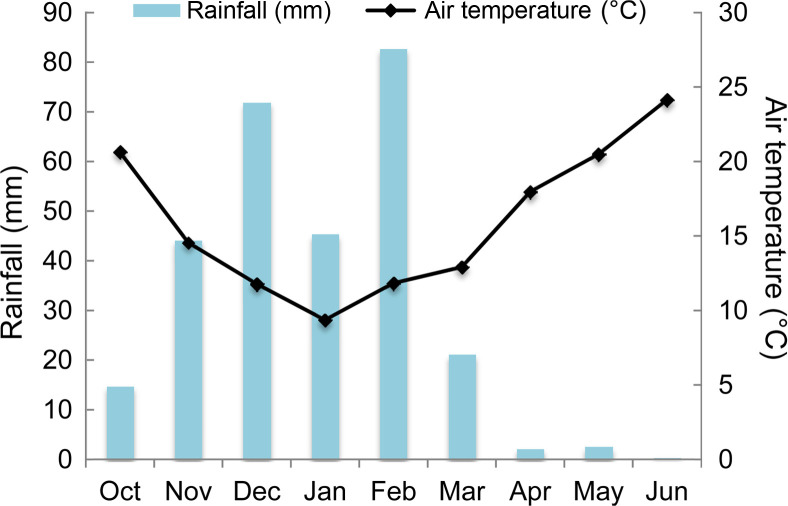
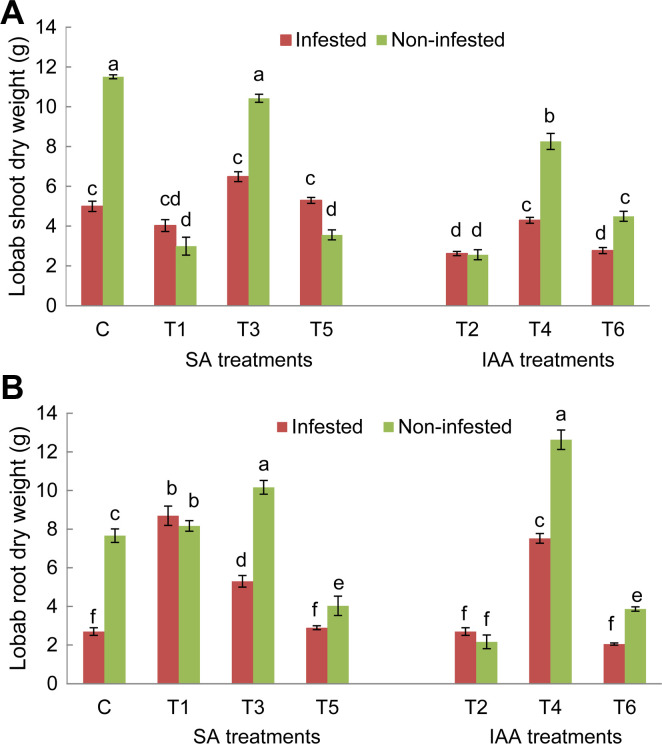


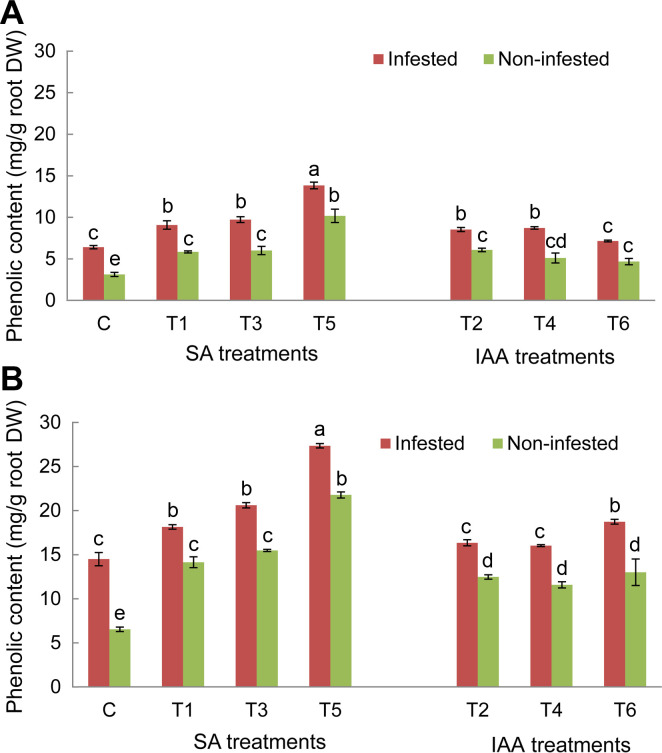
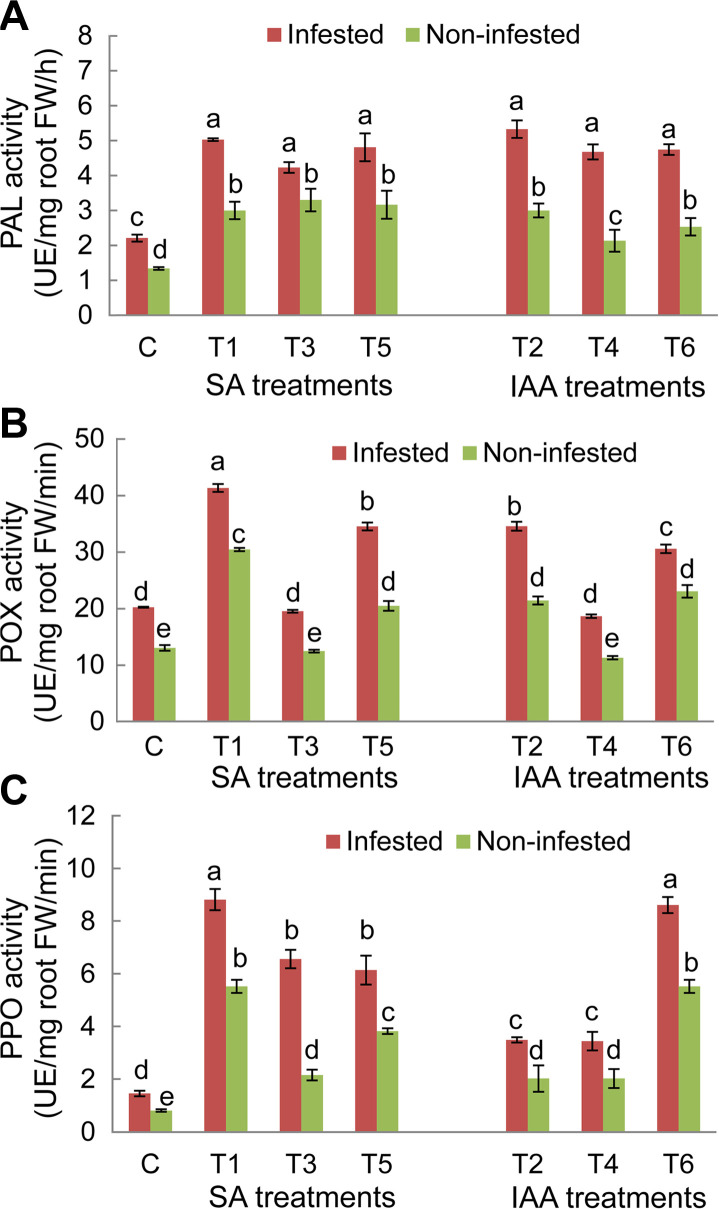

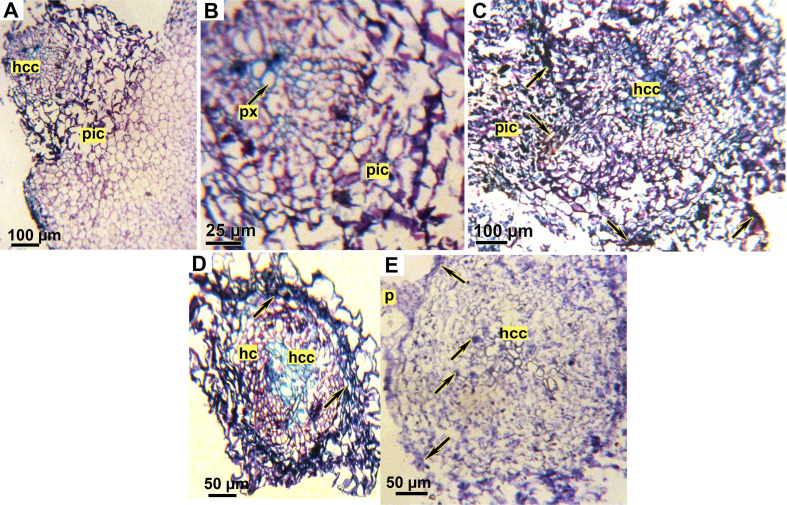




 PDF Links
PDF Links PubReader
PubReader Full text via DOI
Full text via DOI Full text via PMC
Full text via PMC Download Citation
Download Citation Print
Print




